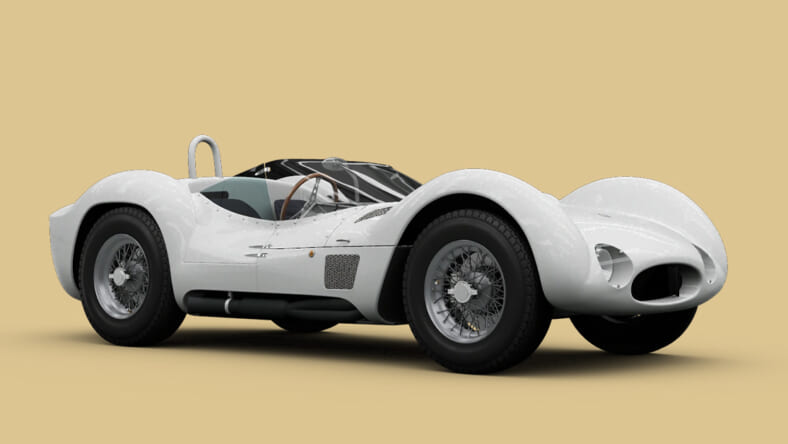A Look Back At The Maserati Tipo 61 Birdcage 2454
The Tipo 61 Birdcage 2454 is one of the most legendary and innovative Maseratis, which dominated some of the most […]

The Tipo 61 Birdcage 2454 is one of the most legendary and innovative Maseratis, which dominated some of the most prestigious motoring events worldwide.
After Maserati’s successful 3500GT was introduced in the late fifties, the company was able to develop racing cars such as the Maserati Tipo 61. This was mainly because of the revenue generated from the vehicle. Design engineer Giulio Alfieri designed an intricate chassis that was nicknamed the Birdcage because of its intricate design.
Despite only making six units, its complex design was upgraded to have a larger engine for it to compete in the American racing series. As a Type 61, it won several races, including the 1000km Nürburgring race. A lot of criticism was directed toward the Maserati Tipo 60/61 at the beginning of its production. The director of Maserati, Omer Orsi, had many doubts about the car’s unusual frame and approached it with an inquiring mind. Indeed, the Tipo 60 could not be considered a conventional Italian sports car by any means, but it was a product of a rapid transformation, which introduced a new way of looking at racing cars.
The Birth Of The Birdcage
The Alfieri birdcage was constructed without using a tub chassis or ladder frame and instead is built with a series of small tubing segments. This design comprised more than 200 individual components, with steel tubes ranging in diameter from 10 mm to 15 mm, which were used to assemble the whole thing. In most cases, a Birdcage chassis looks like a complex network arranged into a pyramid shape.
As far as birdcages go, the engine of the Birdcage had to be the most straightforward part of the whole system. It was a gasoline-powered inline-4 engine that was a development of the inline-4 engine that was used in the 200S. The machine was modified extensively to include a rocker system that operated the cylinder head’s valves. Interestingly enough, during the development of this engine, an unusual triangular oil sump was used for lubricating the dry sump and containing the oil.
A Fire-Breathing Engine
Due to the superiority of the Tipo 60’s chassis, the United States requested an immediate response. Some folks wanted a three-liter version to compete in SCCA events in particular. There was also the possibility that a car of such a nature would be eligible for entry into the World Sports Car Competition in the under-three-liter class, which was Ferrari 250 Testa Rossa’s territory. As a consequence of the size of the engine block, the maximum cubic capacity that could be accommodated was 2.9 liters. This 2.9-liter engine was used to churn out 250 bhp. This engine was mated to 5-speed manual transmission and had a top speed of 177 mph. As a result, we could move forward with the project and Tipo 61, which was born as a result of this.
An Iconic, Timeless Design
In terms of design, Tipo 61’s chassis was very similar to the design of the preceding model. As a result of the increased size of the braking system, the caliper mounting system was improved to 14 inches. The weight of the Tipo 61 was caused by a heavier crankshaft, connecting rods, and brakes. This made the car about 70 lbs heavier than the Tipo 61 released in 2007. Because of this weight, the Tipo 61 had a less optimal power-to-weight ratio than the Tipo 60 due to the more considerable weight of the car.
The Maserati Birdcage was a debut car for Stirling Moss when he won the 1959 Delamare-Deboutteville Cup, a support race for the Rouen Grand Prix, using the car’s low weight and light fuel consumption. There were several hill climbs and gentlemen-driver victories that Tipo 60 cars took in that year as well.
A few years after the three-liter Tipo 61 car debuted in America, the vehicle became an American icon. During the 1960s, Roger Penske won an SCCA class championship in his Tipo 61, and then Gus Audrey won a class championship in 1961. Because of these victories, the car became even more popular, encouraging some teams to test the car out in International Motor Sports as well.
The Birdcage 2454
This car was initially purchased from the factory in 1959 by American privateer racer Loyal Katskee with chassis number 2454. This chassis was first raced in late 1959, during Nassau Speed Week, as it was the prototype chassis for this car. A third-place finish at Road America was the most successful result Katskee achieved with the car in 1960.
Don Skogmo, got a hold of the car in early 1961 and was able to run it in SCCA races, winning two of them. The car was later sold to Don Hawker, who continued to run the car. A few years ago, chassis 2454 returned to Europe and was owned by Giulio Dubbini for a considerable amount of time. Swiss historic racer Carlo Vogele acquired this highly original car in the late 1990s after buying it for a fraction of its original value.
After the Nürburgring 1000 km race, he swapped it for Klaus Werner’s Maserati 300S that won the race. Its more recent acquisition occurred when it was bought at auction by one of its current American custodians, Gooding & Co. Pebble Beach, for a whopping $ 3.2 million.
